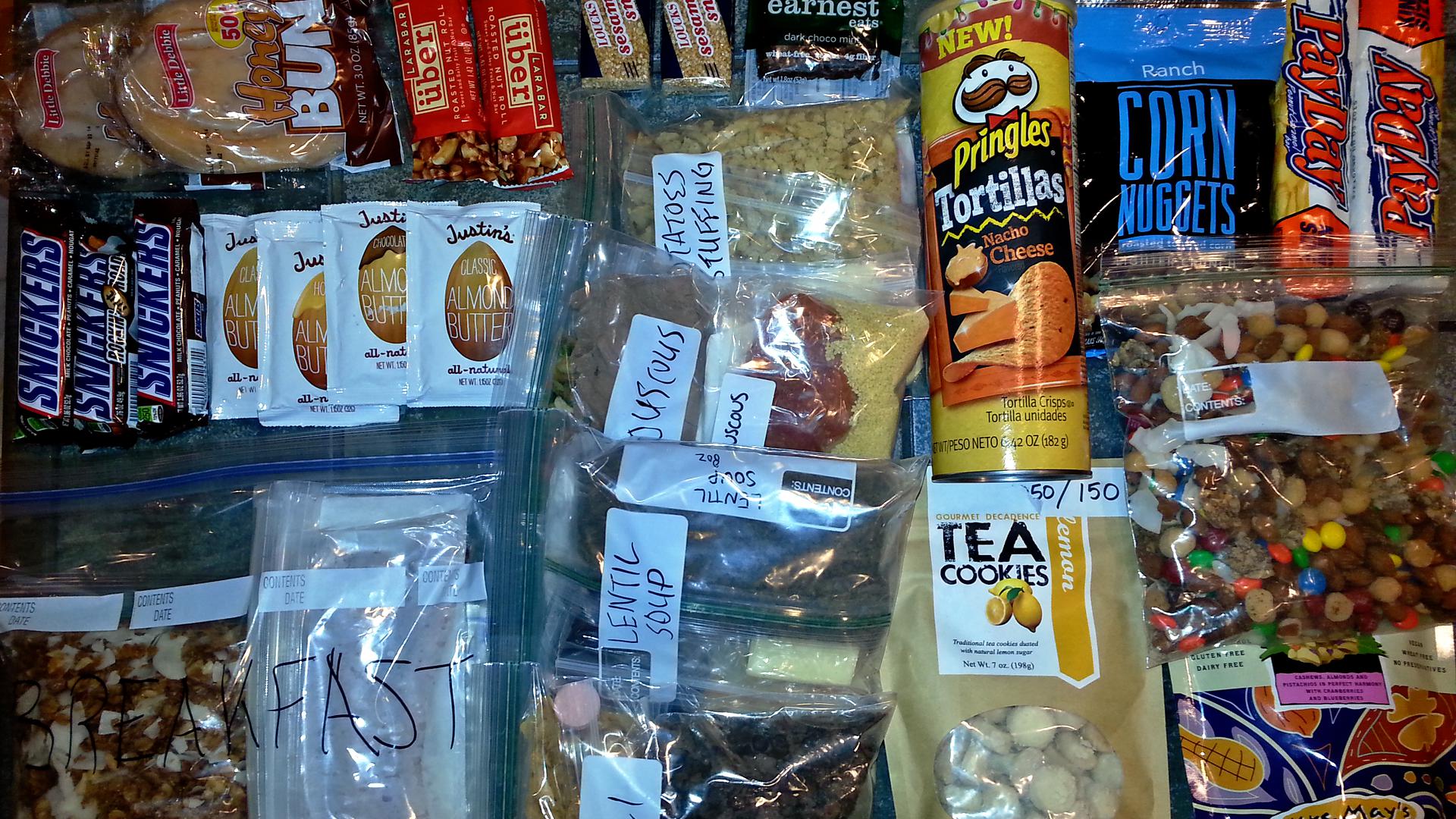Podcast: Download (Duration: 34:15 — 34.2MB)
Today on The First 40 Miles, GRUB: The Food Episode! We’ll give you 5 great ways to protect yourself and future hikers in your outdoor kitchen. Then on the SUMMIT Gear Review, a squirrel would have to be nuts to try to chew through this amazing food sack. On the Backpack Hack of the Week, we’ll teach you how to stockpile your arsenal of high calorie grab-and-go foods for your next trip. We’ll share some info on the good kind of dehydration in our backpackers Q+A, and we’ll wrap up the show with a little trail wisdom from a man who probably never missed a meal in his life.
Show Notes: Episode 038: GRUB: The Food Episode
Opening
- Story of shopping for the Mt Hood trip
- Sedentary day caloric needs vs. hiking day caloric needs
- Calories per ounce
- Is it necessary to count calories?
The Top 5 Backpacking Food Safety Tips
Read a Chapter from Food Safety for Dummies
- Simple rule: Wash your hands after you use the bathroom
- You can’t ensure that your hiking buddies are doing that, so don’t let them reach into your bag of trail mix…just dump it into their hand.
- Not being germaphobe…just looking at the data
- Trekkers Trots are more likely from poor hygiene than from drinking unpurified water
Animal-proof Your Food
- Stainless steel mesh bag
- Bear canister
- Tying up food in a tree
- Bin on site
- Sleep with food? Not a risk we’re willing to take…
Like Goes with Like
- Treat all scented stuff like food.
- Lip balm, sunscreen, toothpaste, deodorant, and your toothbrush needs special storage consideration.
Cook Your Food 100 Feet Downwind
- Otherwise, you may be encouraging animals to come through your camp
Keep Your Food Waste Under Control
- Pack all of your meals in ziploc bags (to contain the mess)
- Bring along a empty peanut butter jar to store leftovers, and eat the leftovers within 1-2 hours of making dinner to avoid having your food be in the danger zone when bacteria grows the fastest
- To avoid making too much food, share or cut meals in half
- Pack it Out: That means no tossing last night’s noodles behind a bush in your campsite
- Hiding your food behind a bush causes potential problems for future backpackers
SUMMIT Gear Review™: Simple Outdoor Solutions Outsak UL
Structure
- Outsak UL is lighter weight than the Outsak Spectrum Bags
- Heavy Duty
- Interlocking stainless-steel wire mesh makes the Outsak bags strong enough to stop rodents, raccoons, and other small animals
Utility
- Outsak UL bags protect food from gnawing and clawing animals:
Rodents
Raccoons
Squirrels
Skunks
Cats
Mass
- 3.5 oz
- 10.5×19”
- 625 cubic inches
- Can hold Heather’s food for a 5-6 day trip
Maintenance
- 3 year warranty
Investment
- $37 (with free shipping)
Trial
- Strong hook and loop closure all the way across the top
- Easy to use
- Works as a stuff sack for food
- You may need a moisture barrier (ziploc) if you have foods that weep like cheese, salami or chocolate.
- This piece of gear is made by yet another inventive backpacker who also has a knack for creating great gear that solves a problem on the trail!
Backpack Hack of the Week™: Bucket o’ Calories:
Heather started this box when she began writing a backpacking cookbook and needed a place to put all the ingredients for the recipes. Then it just ended up being a really handy box of shelf stable, high-calorie trail food that we could grab from whenever we were planning a backpacking or day-hiking trip.
- Nuts
- Pre-packaged single serve nut butters
- Freeze dried food
- Instant grains: instant grits, oatmeal, brown rice, chia seeds, home dried lentils
- Sturdy crackers like wheat thins and triscuits
- Instant oatmeal and grits packages
- Packets of tuna and packets of mayo/mustard
- Bacon bits (go great with instant grits!)
- M&Ms (plain, almond, peanut, mint, pretzel…)
- Fast carbs (candy)
- Parmesan in a can
BONUS HACK: All episodes of The First 40 Miles that have a backpacking food recipe
Backpackers Q+A
What do you recommend for dehydrating my own trail snacks? Is there a dehydrator that you use? What kinds of things can you dehydrate in it?
- We’ve used several different methods for dehydrating: electric dehydrators, the oven, the microwave and a hot car.
- We have the Excalibur 9 Tray Dehydrator
- Love it because it’s square, dries food pretty evenly, dries a lot of it.
- Dehydrate fruits, make fruit/yogurt leather, flax and vegetable crackers, entire meals, soups, beef jerky, kale chips, soaked nuts
- The flavor and texture is somewhat altered, but dehydrating gives you 100% control over the ingredients in your food.
Trail Wisdom
“There is no love sincerer than the love of food.”
-George Bernard Shaw

